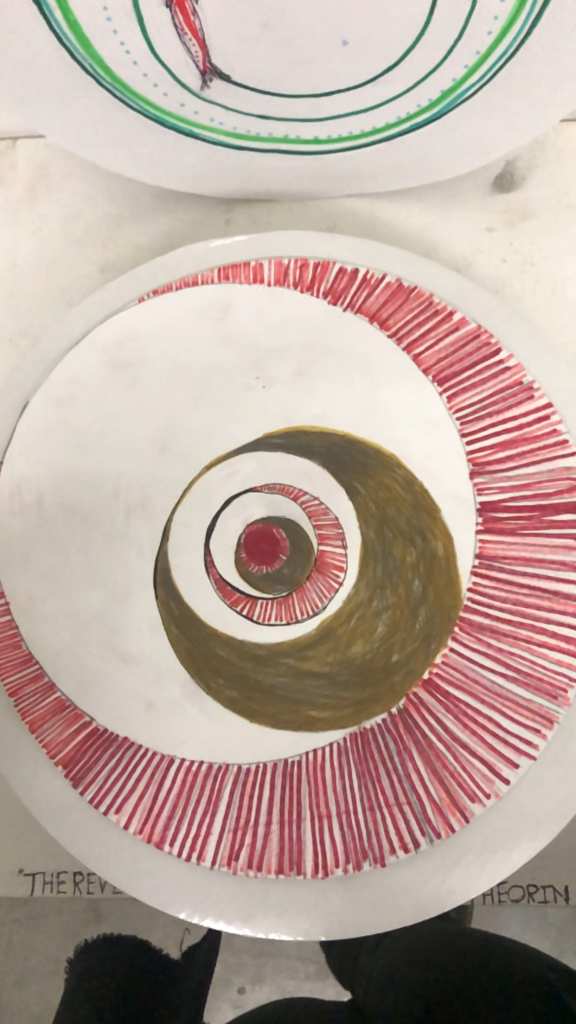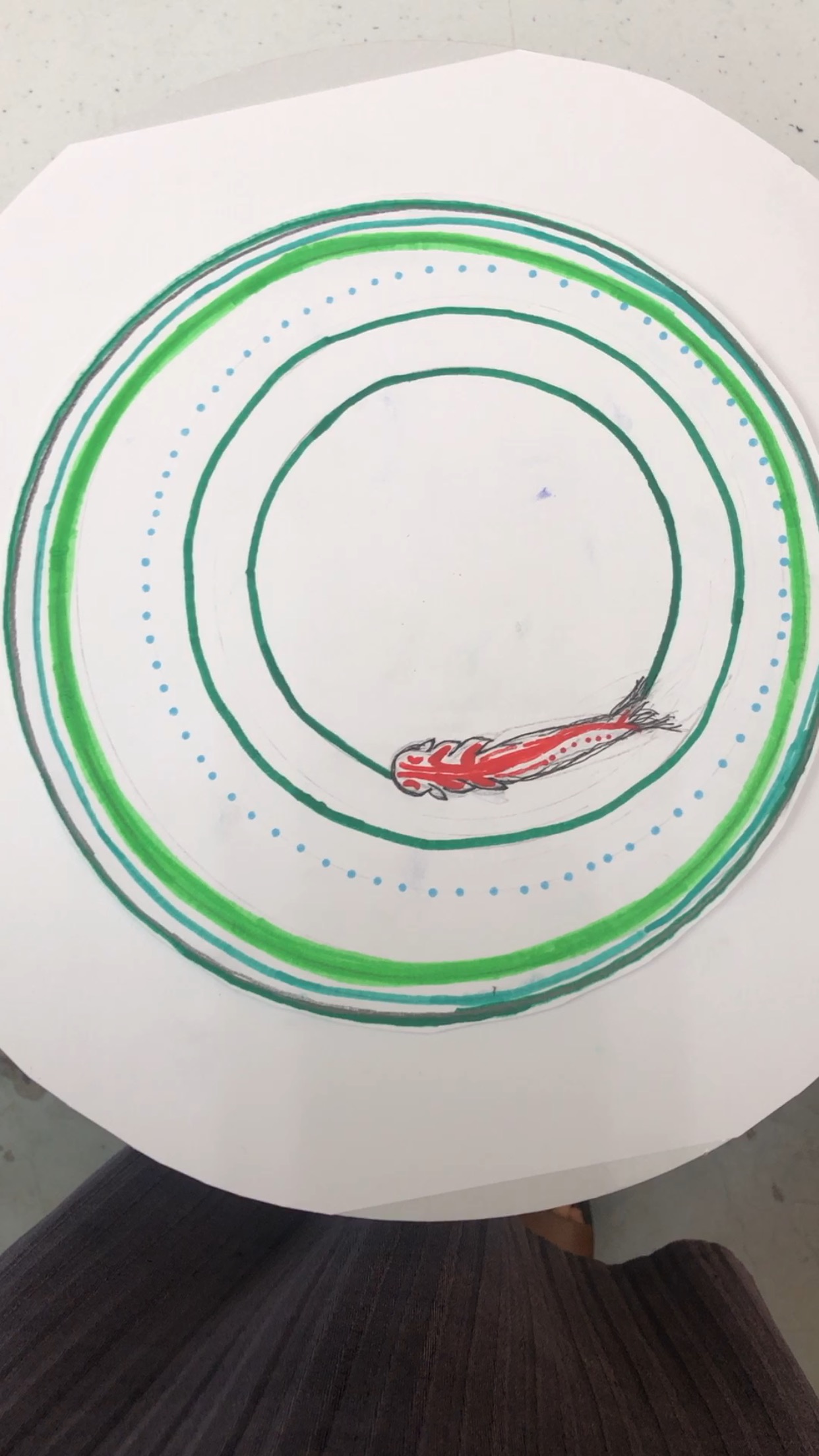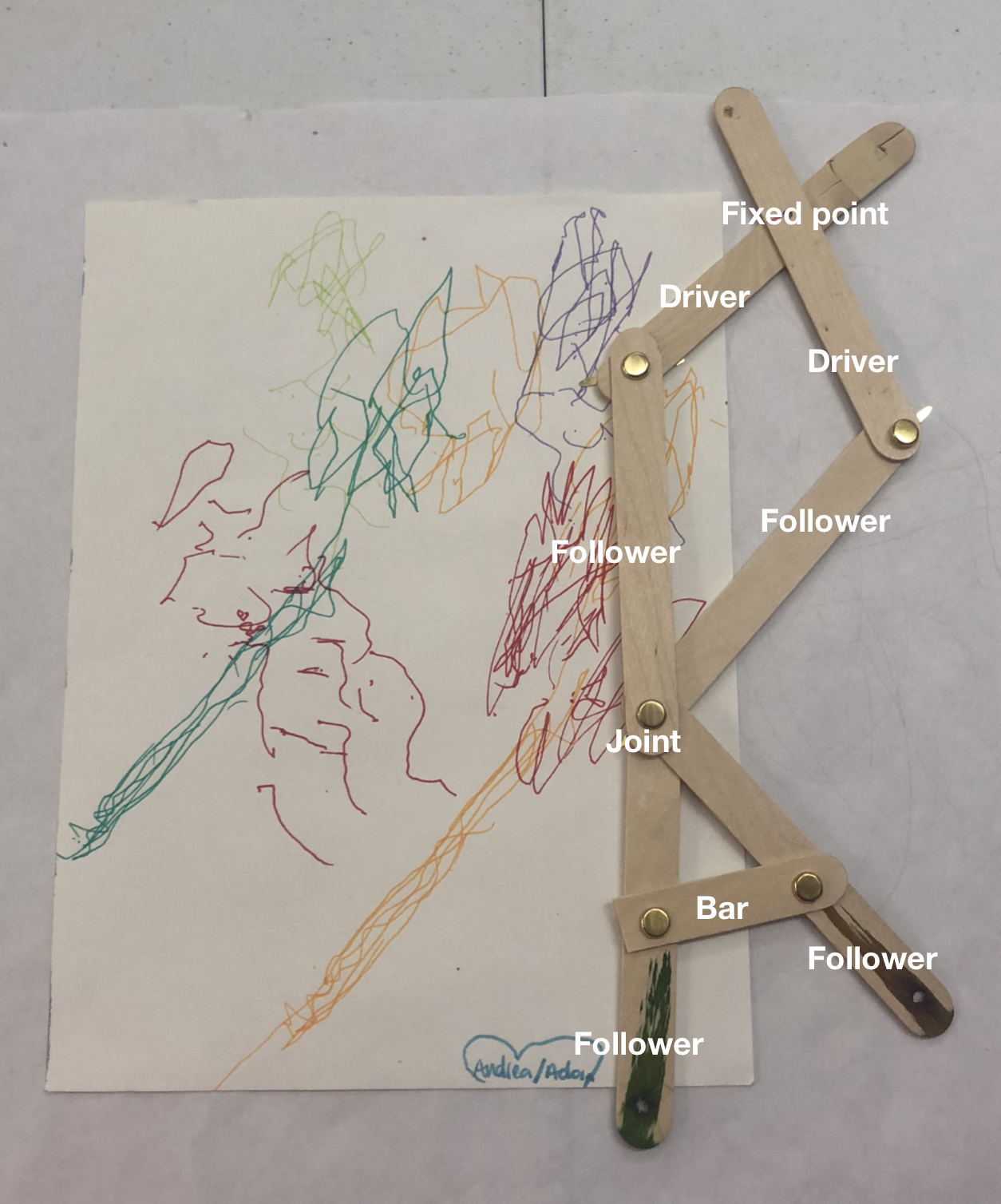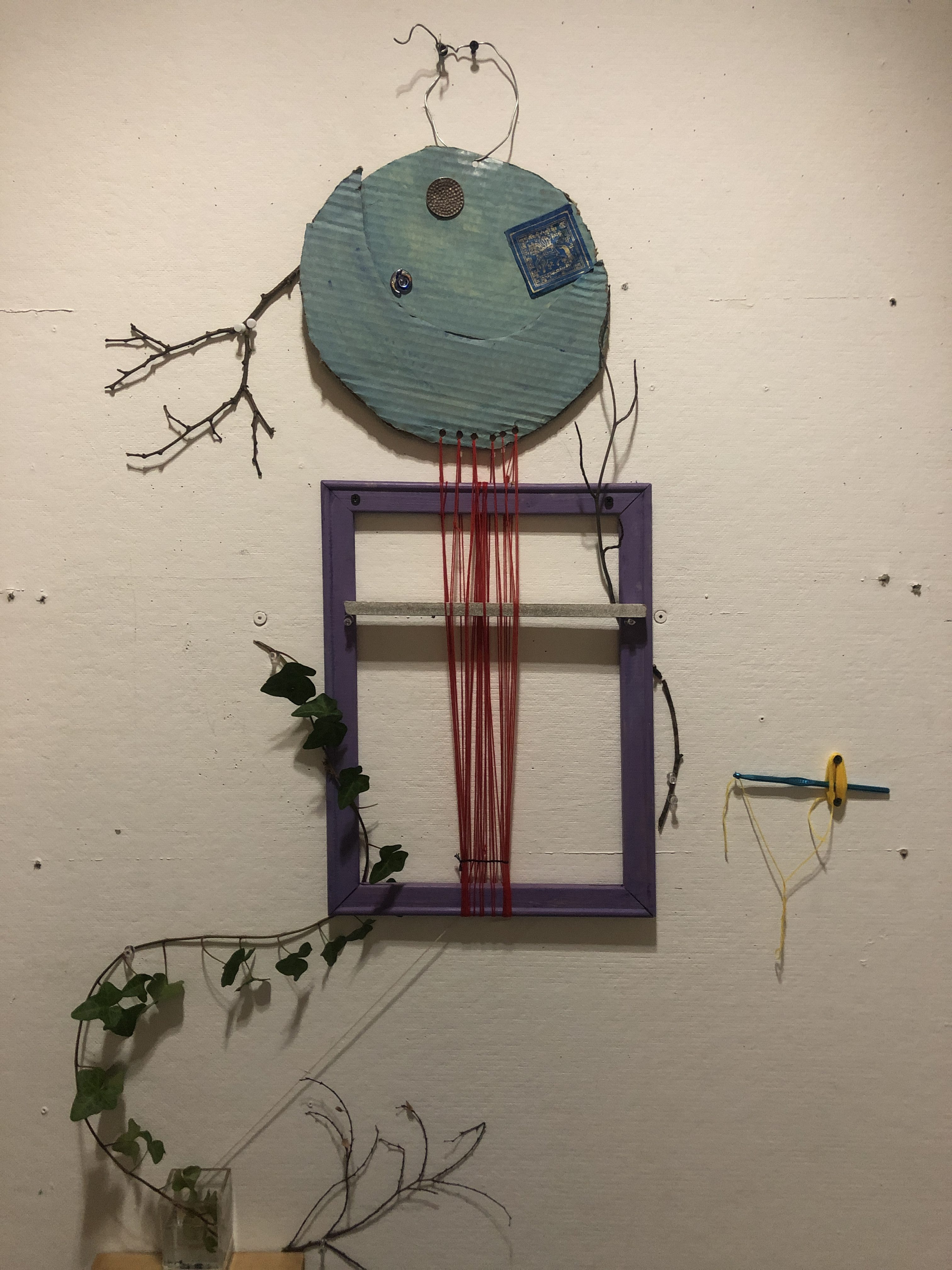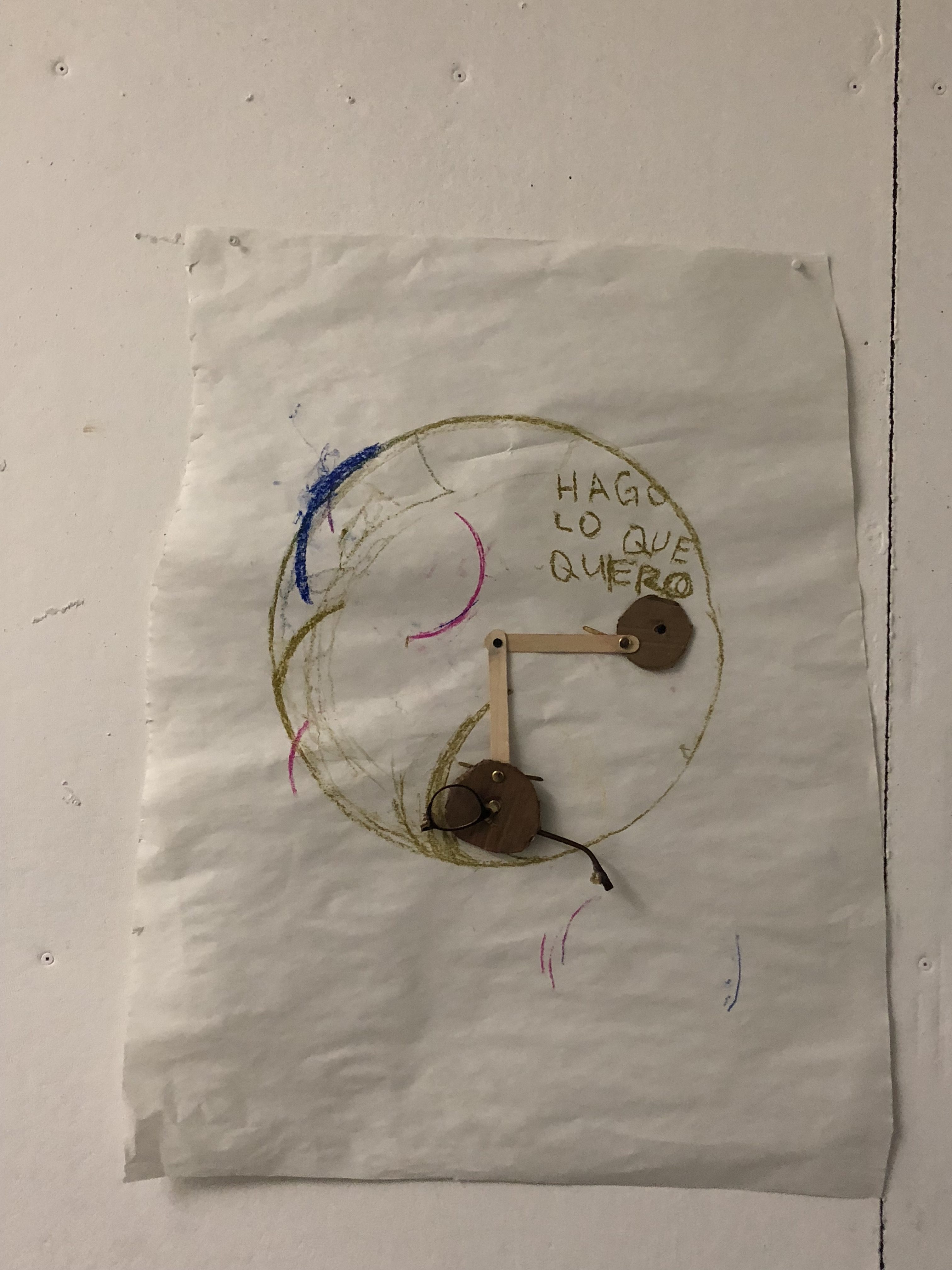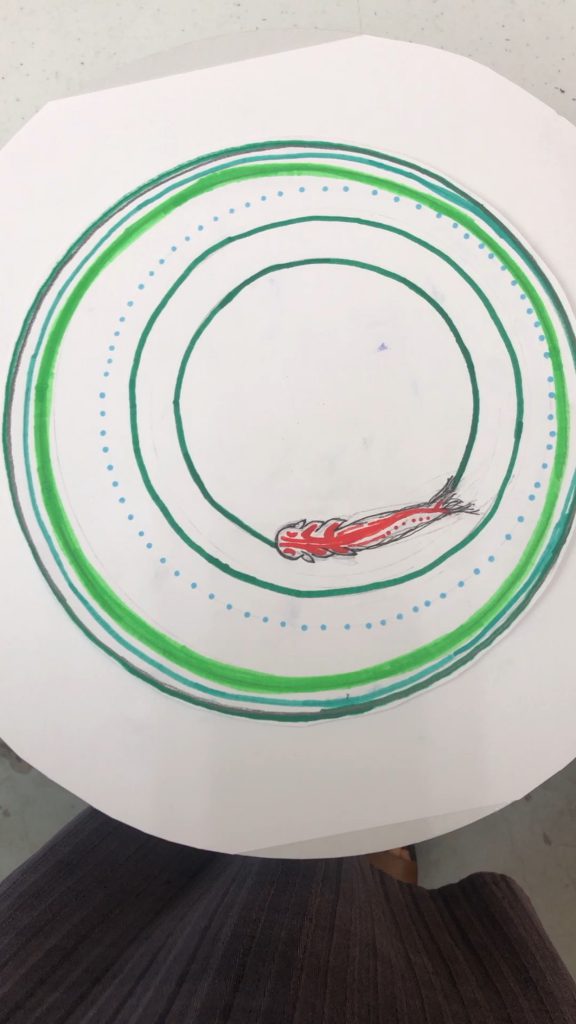
My vision machine is modeled after Marcel Duchamp’s rotoreliefs or decorated discs made to spin on a turntable as optical entertainment. These spinning discs observe the process through which the human visual apparatus creates the impression of movement and spatial depth. A rotorelief’s specific graphic and dynamic configuration causes the human eye and its perceptual mechanisms to perceive the images before them as moving or multi-dimensional. According to Andreas Broeckmann, Duchamp’s rotoreliefs are epitomal representations of the mediality of human perception. In other words, our optical and neurological ability to interpret visual data are vulnerable to illusion or manipulation because the human mind is mediated by the eye and how our brain processes visual perception.

This phenomenon is made apparent by the development of the stroboscopic effect in 1831 proposing that images which appear to the human eye in discrete forms can be perceived as a continuous, moving sequence if the differences between them were small enough. Broeckmann interestingly describes Duchamp’s spinning disks as “hyper-retinal”. The term retinal relates to the thin layer of tissue that lines the back of the eye which receives light that the lens has focused, converts the light into neural signals, and sends these signals on to the brain for visual recognition. The rotoreliefs reveals how our visual apparatus creates the impression of movement and dimensionality from a particular graphic arrangement. Duchamp’s ultimate goal with these optical experiments was depth perception and the illusion of 3D. Their rotations appear to the human eye as contrary movements as a result of their meticulous designs.

When designing my own rotorelief, I wasn’t aware of exactly what configurations on the motionless disc were responsible for evoking this sense of motion once mobilized until I observed the subtle differences in the form, figure, and location of the images that I was drawing out. My rotoreliefs were manually illustrated, thus I could witness how the effects of the media apparatus were dependent on the physiology or the functions of visual perception as a conditioning framework. By emphasizing its own graphic and dynamic presentation, the rotorelief articulates aspects of technical and human physiological dispositions. They additionally reinvent the medium of image-making to tailor to their aesthetics. These spinning discs highlight the entanglement of human perception in the technical construction of images, dependent on specific material conditions in a rather minimalist fashion. The shapes and movements of the spinning discs I made raise awareness to visual perception as a process coupled to a technical medium that creates optical illusions. Duchamp thus enables a new artistic experience by exposing how our understanding of an image is mediated by our prior neurological knowledge and intuition of the its process. His experiments are apart of a creative continuum aiming to perceive images as moving or multi-dimensional.
